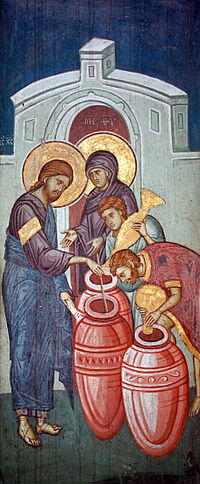
Photo from wikipedia
Persistent π-radicals such as MV+• (MV refers to methyl viologen, i.e., N,N'-dimethyl-4,4'-bipyridinum) engage in weak radical-radical interactions. This phenomenon has been utilized recently in supramolecular chemistry with the discovery that… Click to show full abstract
Persistent π-radicals such as MV+• (MV refers to methyl viologen, i.e., N,N'-dimethyl-4,4'-bipyridinum) engage in weak radical-radical interactions. This phenomenon has been utilized recently in supramolecular chemistry with the discovery that MV+• and [cyclobis(paraquat-p-phenylene)]2(+•) (CBPQT2(+•)) form a strong 1:1 host-guest complex [CBPQT⊂MV]3(+•). In this full paper, we describe the extension of radical-pairing-based molecular recognition to a larger, square-shaped diradical host, [cyclobis(paraquat-4,4'-biphenylene)]2(+•) (MS2(+•)). This molecular square was evaluated for its ability to bind an isomeric series of possible diradical cyclophane guests, which consist of two radical viologen units that are linked by two ortho-, meta-, or para-xylylene bridges to provide different spacing between the planar radicals. UV-Vis-NIR measurements reveal that only the m-xylylene-linked isomer (m-CBPQT2(+•)) binds strongly inside of MS2(+•), resulting in the formation of a tetraradical complex [MS⊂m-CBPQT]4(+•). Titration experiments and variable temperature UV-Vis-NIR and EPR spectroscopic data indicate that, relative to the smaller trisradical complex [CBPQT⊂MV]3(+•), the new host-guest complex forms with a more favorable enthalpy change that is offset by a greater entropic penalty. As a result, the association constant (Ka = (1.12 ± 0.08) × 105 M-1) for [MS⊂m-CBPQT]4(+•) is similar to that previously determined for [CBPQT⊂MV]3(+•). The (super)structures of MS2(+•), m-CBPQT2(+•), and [MS⊂m-CBPQT]4(+•) were examined by single-crystal X-ray diffraction measurements and density functional theory calculations. The solid-state and computational structural analyses reveal that m-CBPQT2(+•) is ideally sized to bind inside of MS2(+•). The solid-state superstructures also indicate that localized radical-radical interactions in m-CBPQT2(+•) and [MS⊂m-CBPQT]4(+•) disrupt the extended radical-pairing interactions that are common in crystals of other viologen radical cations. Lastly, the formation of [MS⊂m-CBPQT]4(+•) was probed by cyclic voltammetry, demonstrating that the radical states of the cyclophanes are stabilized by the radical-pairing interactions.
Journal Title: Journal of the American Chemical Society
Year Published: 2017
Link to full text (if available)
Share on Social Media: Sign Up to like & get
recommendations!